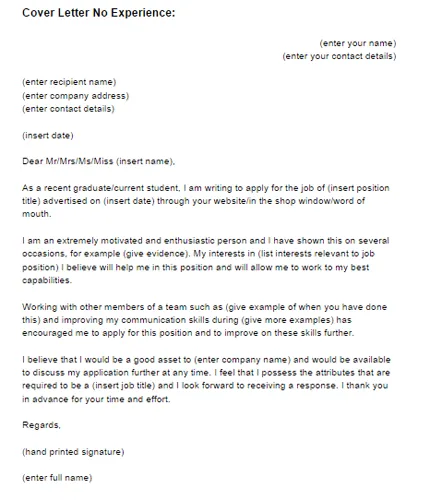Understanding the Purpose of a Cover Letter
A cover letter serves as your introduction to a potential employer, providing a glimpse into your personality, skills, and aspirations beyond what’s listed on your resume. It’s your chance to make a strong first impression, demonstrating your enthusiasm for the role and showcasing how your unique qualities align with the company’s needs. Even without direct work experience, a well-crafted cover letter can effectively highlight your transferable skills, academic achievements, and any relevant projects you’ve undertaken. This document allows you to tell your story, explaining why you’re the perfect fit for the position and how you can contribute to the company’s success. It’s about demonstrating your value and potential, not just your past experiences. A cover letter also offers a chance to address any gaps in your resume, providing context for your career journey and explaining your motivations for applying.
Key Components of a No-Experience Cover Letter
When writing a cover letter with no prior work experience, you should focus on highlighting your transferable skills, academic achievements, and any relevant projects or coursework. The structure of the cover letter is crucial. It should include a header with your contact information, a professional greeting, a compelling opening paragraph, body paragraphs showcasing your skills and enthusiasm, and a strong closing that expresses your gratitude and includes a call to action. Ensure the letter is tailored to the specific job and company you’re applying for. It should be easy to read, well-organized, and free of errors. Proofreading is essential for a polished and professional final product, allowing your personality and skills to shine through.
Header and Contact Information
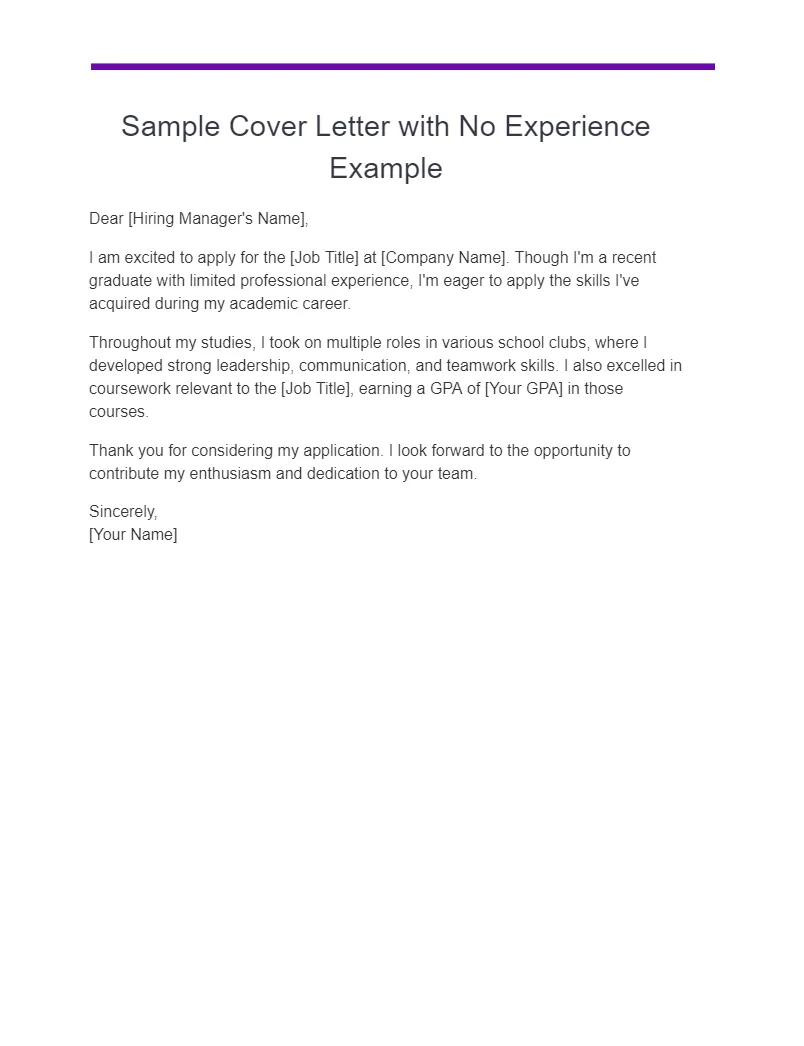
Your header should include your full name, address, phone number, and email address. This ensures the hiring manager can easily contact you. Make sure this information is accurate and up-to-date. You can place this at the top left or center of the page. The contact information should be professional and easy to read. Use a clear and legible font style and size. Double-check all details to eliminate any errors, particularly in your email address and phone number. A properly formatted header is the first step in making a good impression, showcasing your attention to detail and professionalism. Remember that a professional email address (e.g., yourname@email.com) is preferable to a less formal one.
Applicant’s Information
Include your full name, address, phone number, and email address in the header. This lets the employer know how to contact you. Ensure this information is current and accurate. Use a professional email address. Double-check all the details to prevent errors, especially your phone number and email. Place this information either at the top-left or centered on the page, using a clear and easy-to-read font style and size. Accurate and up-to-date applicant information is essential for the potential employer to reach you to set up an interview or provide updates on the job application. This part of the letter sets the tone and gives the employer the first impression of your professionalism.
Date
The date is important for keeping track of when the letter was written, and its placement is usually directly below the header or just after the recipient’s information. The standard way to write this is with the month, day, and year. For instance, you could write it as ‘May 15, 2024’. Formatting should match the rest of the letter, maintaining a clean and consistent style. This ensures the letter looks professional. Make sure you use the current date, reflecting when you are sending the application. Including the date confirms the letter’s timeliness. Keep it concise and in the right format to ensure the employer knows when you applied.
Recipient’s Information
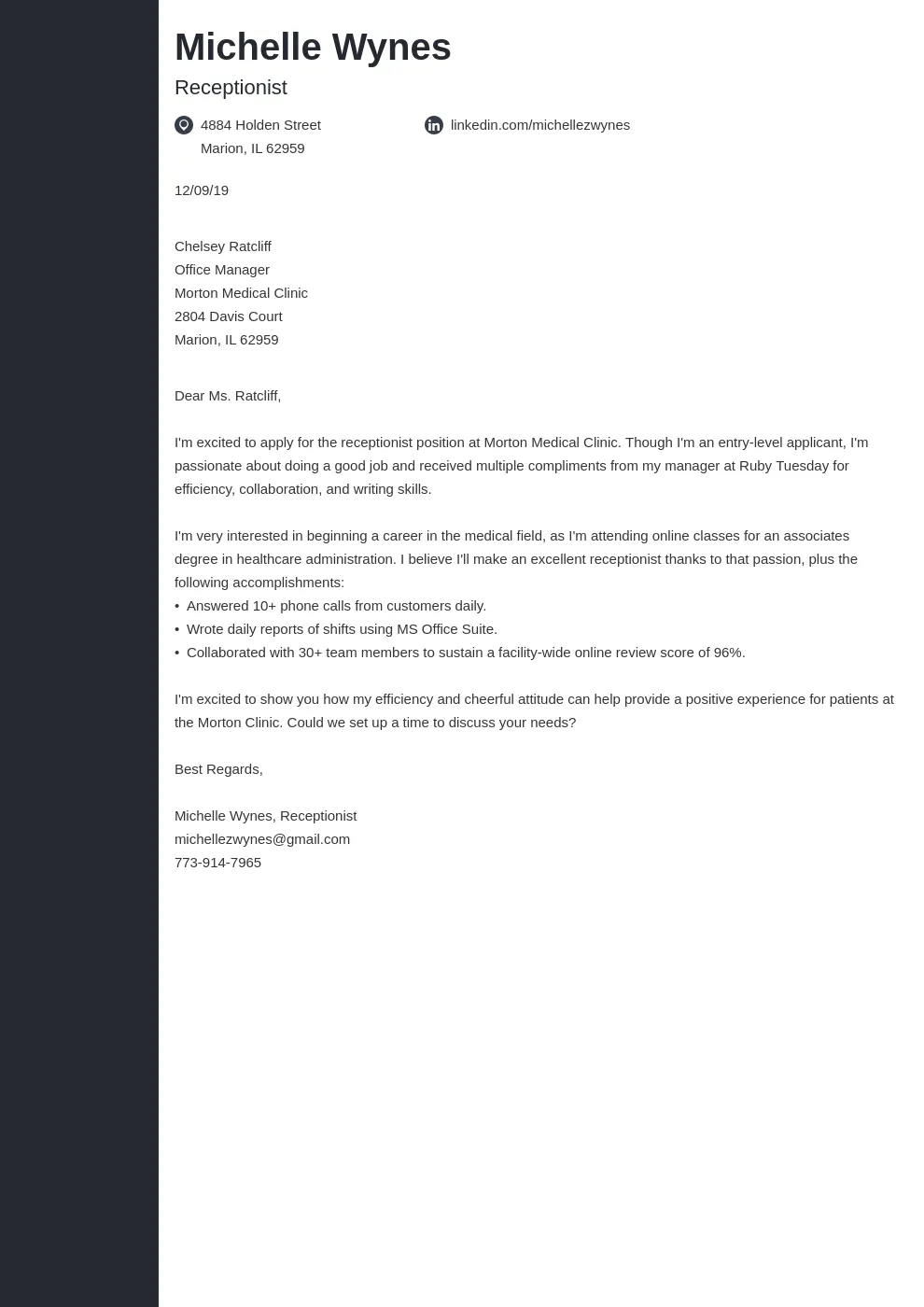
Include the hiring manager’s name (if known), their title, the company name, and the company’s address. If you are unable to find the hiring manager’s name, address the letter to the Hiring Manager or the Recruitment Team. Always research and try to personalize the letter as much as possible. This demonstrates your attention to detail and interest in the company. The recipient’s information is essential for showing the company that you have taken the time to research the opportunity and are serious about the application. Accuracy in this section shows professionalism and diligence, and sets your cover letter apart from others that may not have shown the same care.
Professional Greeting
Start with a formal greeting, such as “Dear Mr./Ms./Mx. [Last Name],” if you know the hiring manager’s name. If the name is unavailable, use “Dear Hiring Manager” or “Dear [Department Name] Team.” Avoid generic greetings like “To Whom It May Concern.” Make your greeting specific to the role and company you are applying for. Using a specific name shows you’ve researched the company and are interested in the role. The greeting sets the tone for your letter, so make sure to be professional and respectful. This is another area that shows professionalism. Personalizing the letter whenever possible will help you leave a positive first impression. This will allow your application to stand out.
Crafting a Compelling Opening Paragraph
Your opening paragraph should immediately grab the reader’s attention and clearly state the position you are applying for. Express your enthusiasm for the opportunity and briefly mention where you found the job posting. Keep it concise and impactful. If you have a connection to the company, even if indirect, mention it here. The opening paragraph is your chance to make a strong first impression. Demonstrate your interest in the role, the company, and the value you can bring. It is essential for immediately capturing the hiring manager’s attention. By beginning with a clear and specific purpose, the reader will want to continue reading, knowing you are a strong candidate.
Highlighting Transferable Skills
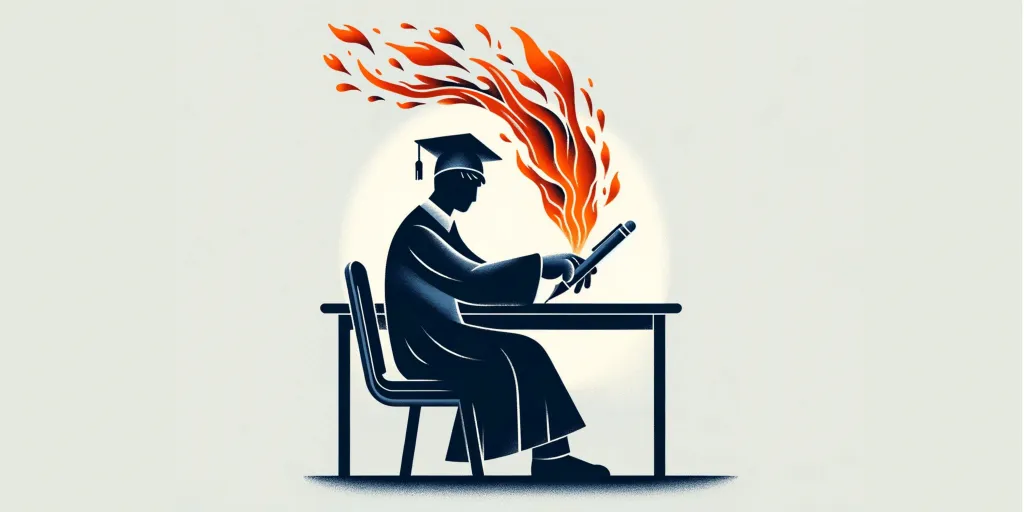
Transferable skills are skills that you’ve gained in one context (like school, volunteer work, or hobbies) that can be applied to a professional setting. Even without prior work experience, you likely possess valuable transferable skills such as communication, teamwork, problem-solving, time management, and leadership. In your cover letter, identify the skills that align with the job description and provide specific examples of how you’ve used them in other settings. This could include experiences from academic projects, volunteer work, or extracurricular activities. Focus on how these skills can benefit the employer. By effectively showcasing these skills, you can show the hiring manager that you possess the necessary capabilities to excel in the role.
Identifying Relevant Skills
Carefully analyze the job description and identify the skills the employer is seeking. These might include technical skills, software proficiency, or industry-specific knowledge. Even without direct work experience, you may have acquired these skills through academic coursework, personal projects, or online courses. Be sure to match your skills to the job requirements. Provide concrete examples of how you’ve used these skills. The examples should be specific and quantifiable whenever possible. Highlight these relevant skills prominently in your cover letter. Providing evidence for the skill you possess is crucial. The hiring manager will understand that you have relevant skills even without the direct experience.
Showcasing Soft Skills
Soft skills, such as communication, teamwork, problem-solving, and adaptability, are essential for success in any role. They are often more difficult to quantify than hard skills, but they are equally important. In your cover letter, provide specific examples that showcase these skills in action. For example, if the job description values teamwork, describe a situation where you collaborated effectively with a group to achieve a common goal. If it emphasizes problem-solving, describe how you approached and resolved a challenging issue. Use the STAR method (Situation, Task, Action, Result) to structure your examples and provide context. Demonstrating these skills allows you to express your ability to bring value to the company.
Demonstrating Enthusiasm and Interest
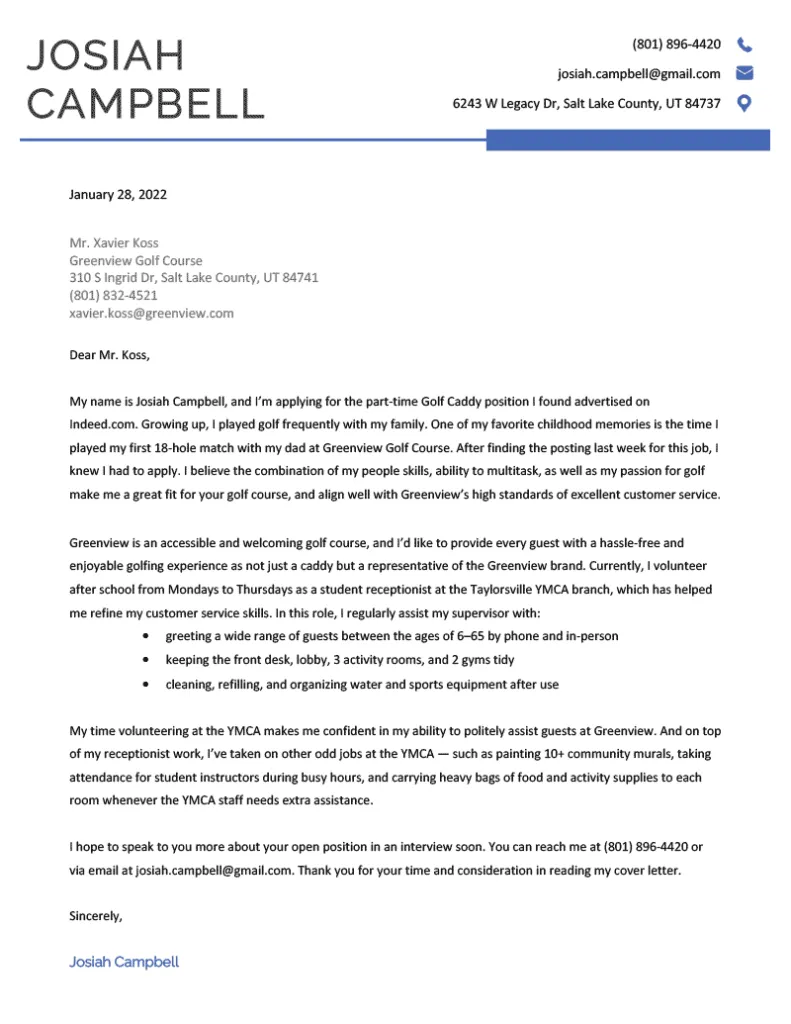
Throughout your cover letter, express your genuine enthusiasm for the role and the company. Explain why you are drawn to the position and what excites you about the opportunity. Show that you’ve done your research. Mentioning specific aspects of the company’s mission, values, or recent projects demonstrates your interest. Your enthusiasm should come across in your tone and language. Use positive and energetic phrasing. Demonstrating genuine enthusiasm can make your cover letter more engaging and memorable. It can show your desire to work at the company. This also sets you apart from other applicants. This can make you stand out, because enthusiasm is contagious.
Providing Examples of Your Skills
Instead of simply listing your skills, provide concrete examples of how you’ve used them. Use the STAR method (Situation, Task, Action, Result) to structure your examples. Describe the situation, the task you faced, the actions you took, and the result you achieved. This method provides context and shows the impact of your actions. The more detailed and specific your examples, the more compelling your cover letter will be. By providing examples, you can transform your cover letter from a list of skills to a demonstration of your abilities. Your prospective employers want to know what you can do, and examples are a perfect way to show them.
Highlighting Projects and Coursework
If you lack direct work experience, showcase relevant projects and coursework. This provides evidence of your skills and knowledge. Describe projects that are relevant to the job requirements. Mention the specific tasks you completed and the results you achieved. Detail your role in team projects, highlighting your contribution to the group. Include any relevant coursework, especially if it aligns with the job description. These details demonstrate your ability to apply theoretical knowledge to practical situations. This shows you have real-world abilities. Emphasizing these academic accomplishments allows you to show that you can put your knowledge into practice. This shows that you have the ability to perform well in the job.
Showcasing Academic Achievements
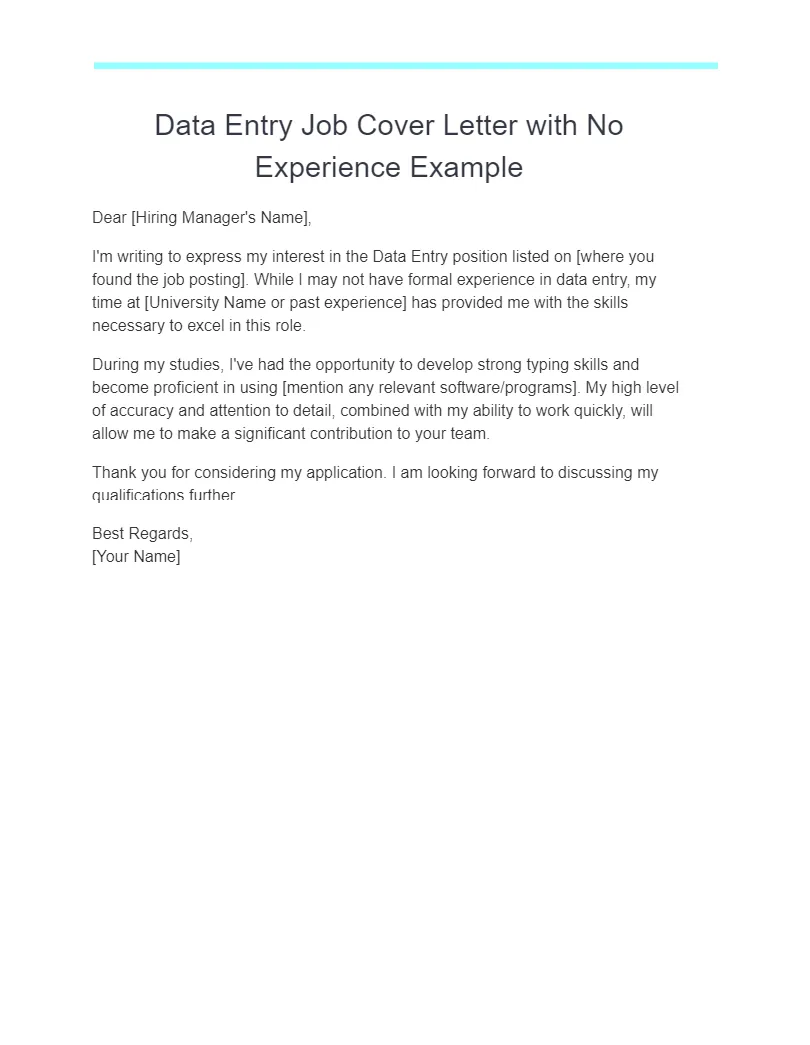
Highlight any academic achievements, such as a high GPA, Dean’s List honors, or scholarships. Include any relevant coursework, especially if it aligns with the job description. Mention any projects or research that are relevant to the role. If you have received any awards or recognition, be sure to include them. Emphasize the skills you gained. Show that you are a dedicated, high-achieving individual. Showcasing your academic achievements helps demonstrate your commitment. They will give the employer a better picture of you as a candidate. This shows the value you can bring to the company.
Tailoring Your Cover Letter to the Job
Customize your cover letter for each job application. Always tailor your cover letter to the specific job description and the company. Review the job description carefully, highlighting the required skills and qualifications. Make sure you address the specific requirements. Research the company. Tailor your cover letter. This will set your application apart from generic ones. By demonstrating that you understand the company and its needs, you show your commitment to the opportunity. This also ensures that you’re highlighting the skills and experiences that are most relevant to the role. This is another area to show your diligence and attention to detail.
Researching the Company and Role
Before writing your cover letter, research the company’s mission, values, and recent projects. Understanding their goals will help you tailor your letter. Understand the role by carefully reading the job description. Identify the key responsibilities and required skills. Use this information to demonstrate that you understand the company’s needs. Understanding the company and the role will help you to showcase that you are a good fit for the organization. It will also show that you have genuine interest. Doing this research will help you to write a tailored cover letter that will grab the attention of the hiring manager. This shows a commitment to the application.
Matching Skills to Job Requirements
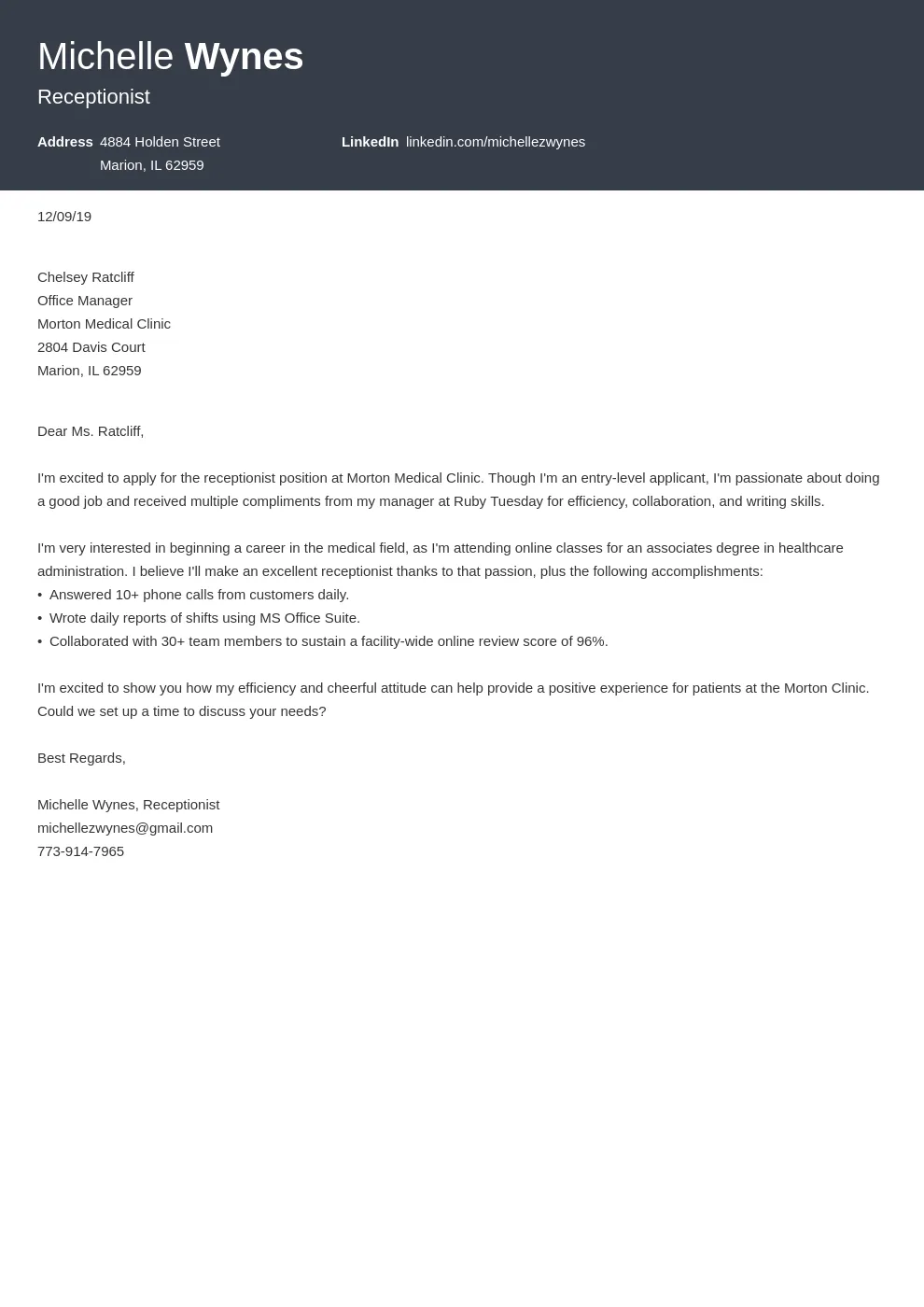
Carefully review the job description and identify the skills and qualifications the employer is seeking. Make a list of your relevant skills, even if you don’t have direct experience. Provide examples of how you have used those skills in the past. Connect your skills to the job requirements. Explain how your skills and experiences make you a strong candidate for the role. By doing this, you show that you are a strong match for the position. This approach will demonstrate that you have a good understanding of the job. It will show that you can perform the tasks required of you. Make sure to highlight how you meet the company’s needs.
Writing a Strong Closing Paragraph
Your closing paragraph is your final opportunity to leave a positive impression. Restate your interest in the role and summarize your key qualifications. Express your gratitude for the reader’s time and consideration. If you are including a resume, mention that it is attached or enclosed. End with a call to action, such as inviting the hiring manager to contact you for an interview. By ending strongly, you will reinforce the value of your application. It also encourages the hiring manager to take the next step. This will improve your chances of landing an interview.
Expressing Gratitude
Always thank the hiring manager for their time and consideration. Express your appreciation for the opportunity to apply for the position. Show your respect for their time. A simple thank you can leave a positive impression. It shows professionalism and courtesy. It is important to make sure you show your appreciation for their consideration of your application. This is another good way to stand out. Expressing gratitude leaves a good lasting impression. This makes you a more memorable candidate.
Call to Action
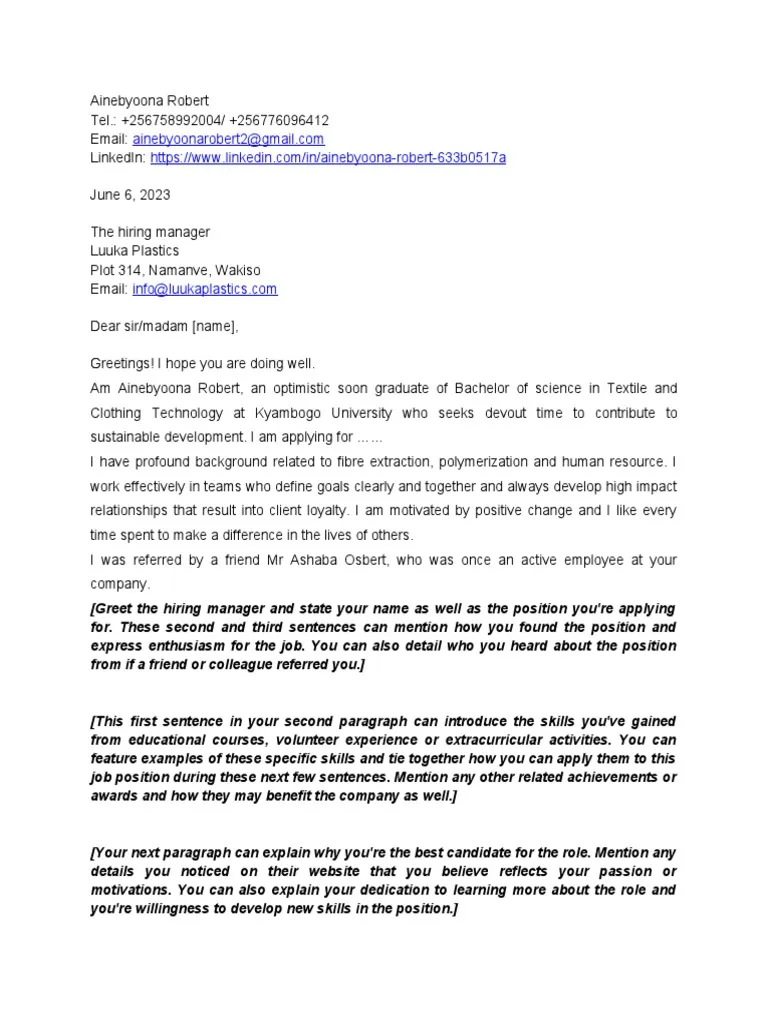
End your cover letter with a clear call to action. Invite the hiring manager to contact you for an interview. Provide your phone number and email address again, to make it easy for them to get in touch. Express your availability for an interview at their earliest convenience. Making it easy for them to contact you increases your chances of being considered. A strong call to action shows your enthusiasm. This is a key ingredient to landing the interview. A clear call to action allows the employer to quickly find your contact information and shows you are eager for the next step.
Formatting and Proofreading Your Cover Letter
A well-formatted cover letter is visually appealing and easy to read. Choose a professional font, such as Times New Roman, Arial, or Calibri. Maintain a consistent font size (11 or 12 points) and use proper spacing. Ensure your letter has a clean and uncluttered layout, with appropriate margins and line spacing. Formatting enhances readability. It also shows your attention to detail. Poor formatting can be a sign that you are not detail oriented. Ensure that you have a clean and professional appearance. Ensure the overall presentation is polished and professional.
Choosing the Right Font and Font Size
Select a professional and easy-to-read font, such as Times New Roman, Arial, or Calibri. Use a font size between 11 and 12 points for the body of your letter. The font should be readable on different devices. The font size must be of an appropriate size to be easily read. Maintain consistency in your font choice. A consistent font style will give your letter a polished look. Choosing the right font and font size is important for a professional look. This is also about readability. The more readable it is, the more likely the recruiter will be to read it. A professional look makes you look more professional.
Proofreading for Grammar and Spelling Errors
Proofread your cover letter carefully for any grammar or spelling errors. Use a grammar checker. Have someone else review your letter to catch any mistakes you might have missed. Errors can damage your credibility. Double-check your contact information for accuracy. A mistake can make you look unprofessional. Proofreading is essential for a polished and professional cover letter. Proofreading ensures you make a good impression. By reviewing it, you show you care. This ensures the application is free of errors. This boosts your chances of getting the job.
